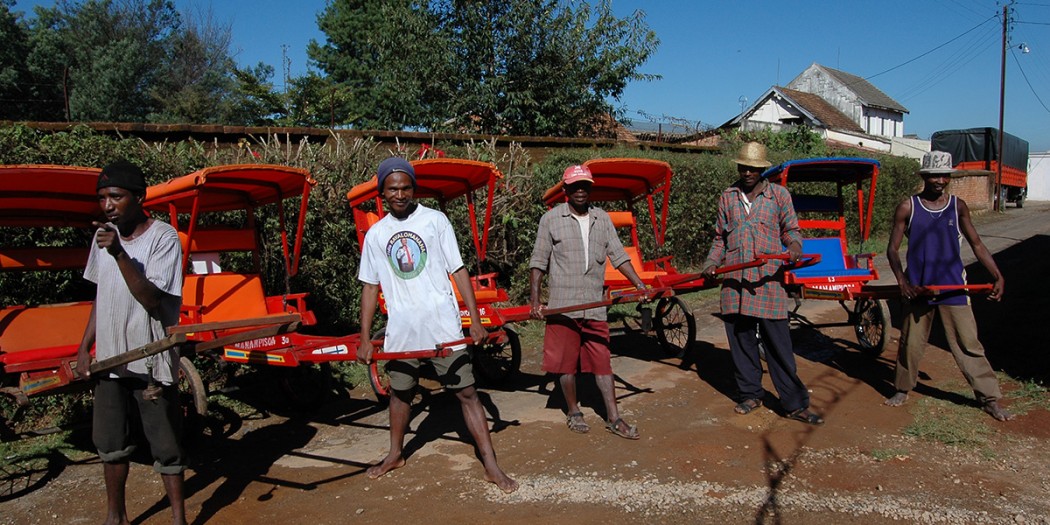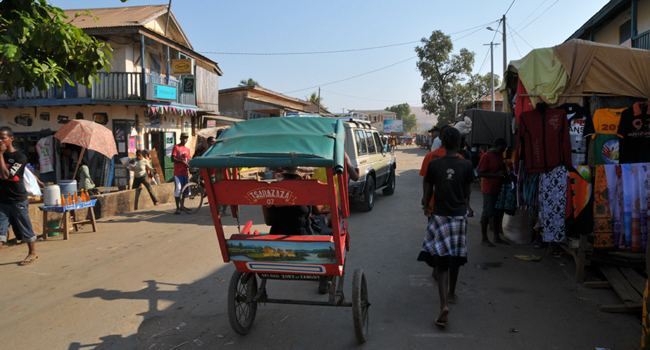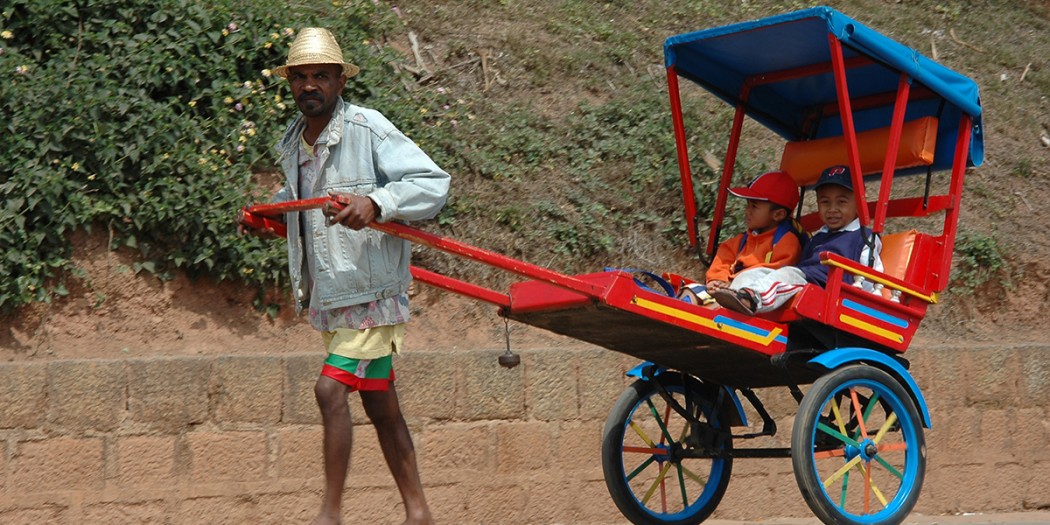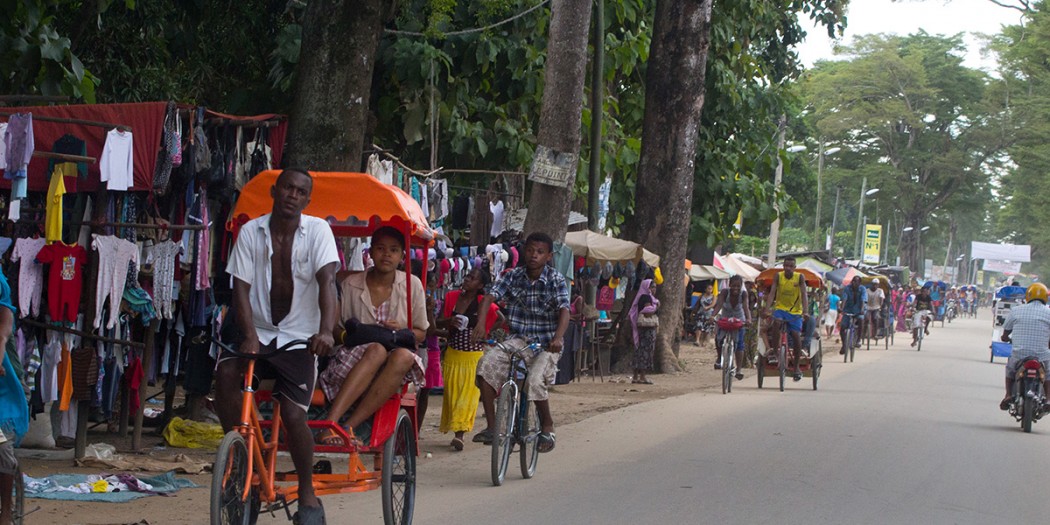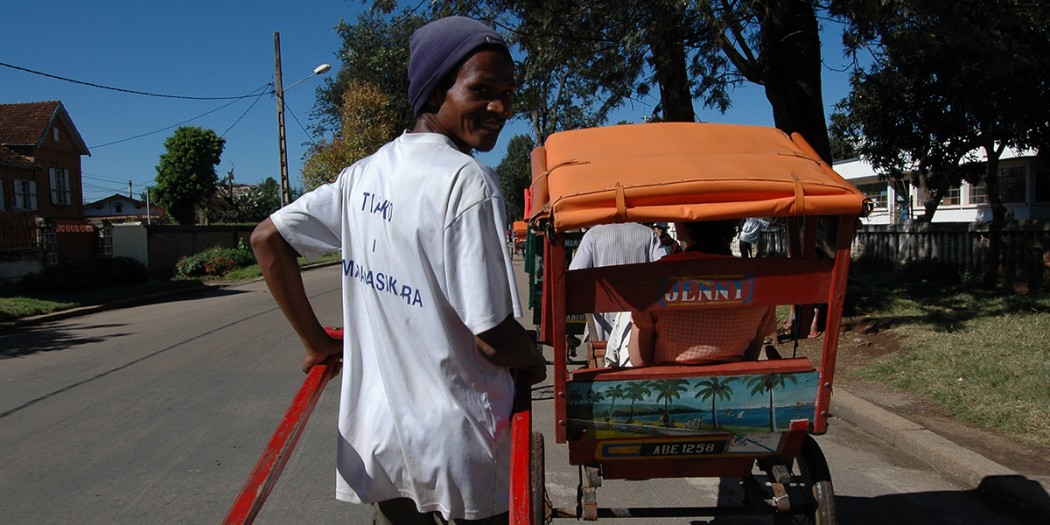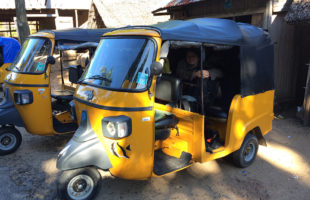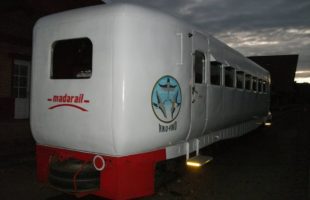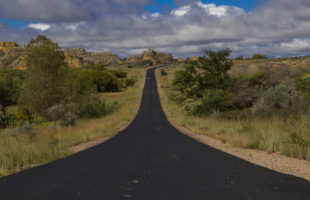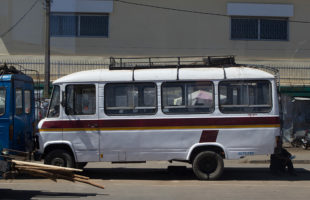If you want to travel in Madagascan cities without a motor, it’s best to take a Pousse-Pousse. These are rickshaws made of colourfully painted wood, which are either pulled by a man on foot or on a bicycle (Cyclo-Pousse). In Malagasy, the vehicle’s name is posy posy, but this is only the Madagascan spelling of the French word. Translated, it means “push, push” – although the vehicle is pulled and not pushed. The term originates from times when Pousse-Pousse had the runner in the back instead of in the front. Due to a lack of visibility behind the guest, he had to rely on the person in front of him. He would turn around and always instruct the man behind him to push or drive: “Pousse, pousse!”
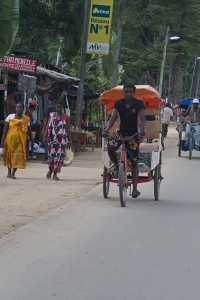
At the end of the 19th century, the first rickshaws arrived in Madagascar with the first Chinese, who were supposed to help as cheap, hard-working workers in the construction of railway lines and the Canal des Pangalanes under the French colonial power. Since then, Pousse-Pousses began their triumphal procession through the entire country and quickly replaced the filanzane, a wooden seat transported between four girders on the shoulders. Only upscale citizens could afford the ride in the Pousse-Pousse, and so the Pousse-Pousse runners and drivers soon became the symbol of Madagascar’s working, poorer population. Even today, more than 90% of the Pousse-Pousse do not belong to the runners or drivers themselves. Most are owned by larger companies that rent the vehicles to their employees for up to 2000 Ariary (less than €1) per day. Each company paints their Pousse-Pousse in their personal colors, the driver contributes a few stickers or a name inscription.
The runners usually earn little, not even 500 Ariary (less than 20 cents) earns an average ride. In terms of cost, the Pousse-Pousse is thus Madagascar’s cheapest means of transport. Most Pousse Pousse runners are barefoot on the way. This means that they can run faster and do not lose their shoes (which are very expensive and therefore valuable for most people) on uneven ground. Nevertheless they lift partly tons of weights and do this work every day anew.
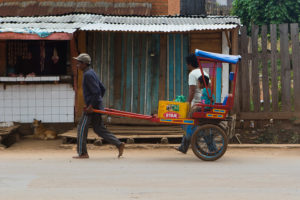
The secret capital of the Pousse-Pousse is Antsirabe in the southern highlands of Madagascar. Here the small vehicles determine the street scene, and hundreds of people earn their money with it. Compared to other cities in the country, Anstirabe is relatively flat and easy to drive with the Pousse-Pousse. Officially there are about 3300 Pousse-Pousse registered in Antsirabe, in fact there should be a few more on the roads. The registration allows the runner or driver to identify himself with a small card as an officially approved Pousse-Pousse. However, it also obliges them to maintain the vehicle regularly.
A roofed Pousse-Pousse has place for two persons – a little adventure, which we can recommend to every traveler. It is advisable to negotiate the price before the drive, otherwise you will get a high extra charge afterwards – as usual for being a Vazaha (white).
 MADAMAGAZINE Your Magazine about Madagascar
MADAMAGAZINE Your Magazine about Madagascar
